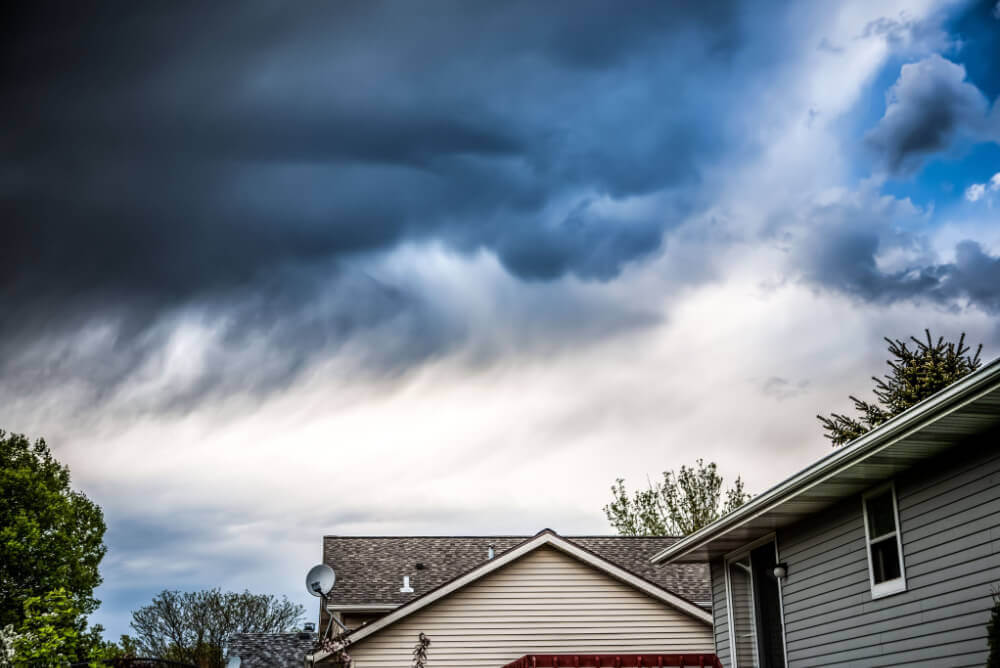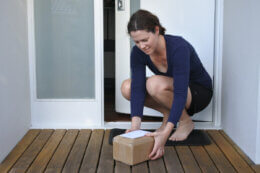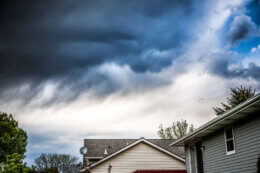
Australians are used to summers filled with bushfires, cyclones and torrential rain. Yet, according to the latest Compare the Market research, more than two in five Aussies (41.3%) are not preparing for the wild weather summer season.*
What’s even more worrying is that this number has stayed relatively the same from last year (41.4%), when the home and contents insurance comparison site asked about preparedness around the bushfire season, which was pre-empted by meteorologists.+
Compare the Market also found that out of the people who were preparing in some way, tidying up the vegetation around the home (27.7%) was the number one way to go about it.
| Ways to prepare ahead of storm and bushfire threats | % of people |
| Tidying up vegetation around the home (mowing lawns, trimming trees, removing dead leaves, etc) | 27.7% |
| Ensuring my home insurance covers bushfires/damage caused by fire | 23.9% |
| Ensuring my car insurance is up-to-date | 20.2% |
| Cleaning surrounding areas of flammable items (woodpiles, mulch, etc) | 20.0% |
| Organising an emergency/first aid kit | 18.0% |
| Organising a contingency plan | 14.6% |
| Organising my survival plan | 13.0% |
| Preparing emergency bags for clothes and personal items if we need to evacuate | 10.7% |
| Have no plans | 41.4% |
Comparison across the states also found some stark differences. Perhaps as one of the most weather-battered states, Queensland saw its residents as the most prepared, with 64.7% of respondents saying they’re preparing for the weather in one way or another. However, this dropped to 54.1% in Victoria, the lowest of all the states surveyed.
| Ways to prepare ahead of storm and bushfire threats | NSW | VIC | QLD | SA | WA |
| Ensuring my home insurance covers bushfires/damage caused by fire | 24.8% | 19.5% | 25.9% | 29.2% | 24.0% |
| Tidying up vegetation around the home (mowing lawns, trimming trees, removing dead leaves, etc) | 23.9% | 20.6% | 43.3% | 26.4% | 34.6% |
| Ensuring my car insurance is up-to-date | 21.4% | 19.8% | 21.9% | 22.2% | 13.5% |
| Organising an emergency/first aid kit | 18.9% | 15.6% | 19.9% | 20.8% | 15.4% |
| Cleaning surrounding areas of flammable items (woodpiles, mulch, etc) | 17.9% | 16.3% | 28.4% | 15.3% | 26.9% |
| Organising my survival plan | 15.1% | 10.9% | 10.9% | 19.4% | 10.6% |
| Organising a contingency plan | 13.5% | 14.4% | 16.9% | 13.9% | 18.3% |
| Preparing emergency bags for clothes and personal items if we need to evacuate | 10.4% | 9.7% | 11.9% | 15.3% | 8.7% |
| Have no plans | 40.9% | 45.9% | 35.3% | 38.9% | 41.3% |
Last year’s Christmas and New Year summer storms and Ex-Tropical Cyclone Jasper cost $1.2 billion in insured damages, according to the Insurance Council of Australia, proving the significant damage these weather events can cause. Compare the Market’s Executive General Manager for General Insurance and home and contents insurance expert, Adrian Taylor, said it’s worrying to see so many people not preparing for a potentially wild weather summer, regardless of whether they are in the city or the suburbs.
“Preparing your home for a wild weather summer should be as commonplace as having a full bottle of sunscreen ready for the beach or popping out to get some fish and chips for lunch on the weekend,” Mr Taylor said.
“We know that people are short on time, but they shouldn’t be complacent about having some sort of plan for when weather strikes. It’s easy to underestimate weather events and how much damage they could cause at the end of the day.
“The 2023 Christmas Storms across the Eastern seaboard cost over $1.2 billion in insured damages to property, including the damages from Ex-Tropical Cyclone Jasper, which hammered far north Queensland during the end of December. And we should all remember the damages suffered across the country during the Black Summer fires of 2019 and 2020.
“And while people can’t do anything against the will of nature, there are things we can do to minimise and mitigate risk. Small jobs around the home, like cleaning out the gutters, or preparing a contingency plan if you live in the city, plays a part in being prepared.
“There also seems to be complacency from people in city centres around preparation, as they don’t have garden maintenance to do. Yet, if bushfires, thunderstorms, or even cyclones reach power stations, there may be a chance that a whole energy grid in the city can go down, with no deadline for when power will or can come back on.
“Of course, people living in the suburbs or further out always have a bit more responsibility for ensuring that their home and surrounding area is kept clean and tidy. This way, sudden wind gusts can’t pick up stray items and cause property damage or have stray embers light up something flammable around the house.”
Mr Taylor also stressed the importance of regularly updating home and contents policies to reflect the true cost of repairing or rebuilding a destroyed home.
“The good thing is that for people who have home insurance, their house is automatically covered for any bushfire-related damages. Flood cover, however, is an entirely different thing, as some policies will have this included in your comprehensive policy, while it’s an optional add-on in others,” Mr Taylor said.
“So it’s always important that people check whether they’re covered for flooding, especially if they bought recently in a flood-prone area.
“Another thing that I would suggest to people around this time of the year is to review their policies and check to see if their sum insured still matches with the current building costs. Building costs have skyrocketed in the past few years since COVID-19, and something that may have cost $500,000 to rebuild then might now cost $700,000 to build.
“Understandably, most people won’t know how to calculate how much rebuild costs would actually be unless they’re in the construction industry, but websites like the Insurance Council of Australia have some great free building and contents calculators, which should give people an indication.
“Now is the perfect time to get all of this sorted before the wild weather sets in and insurers place embargoes on postcodes, meaning that people living in those areas affected by weather events can’t update or make changes to their policy.”
*Compare the Market surveyed 1,001 Australians aged 18 and over in September 2024
+ Compare the Market surveyed 1,005 Australians aged 18 and over in October 2023
-ENDS-
For interviews and more information, please contact:
Noémi Hadnagy | m: 0433 377 252 | e: [email protected]
Compare the Market is a comparison service that takes the hard work out of shopping around. We make it Simples for Australians to quickly and easily compare and buy insurance, energy, and home loans products from a range of providers. Our easy-to-use comparison tool helps you look for a range of products that may suit your needs and benefit your back pocket.








